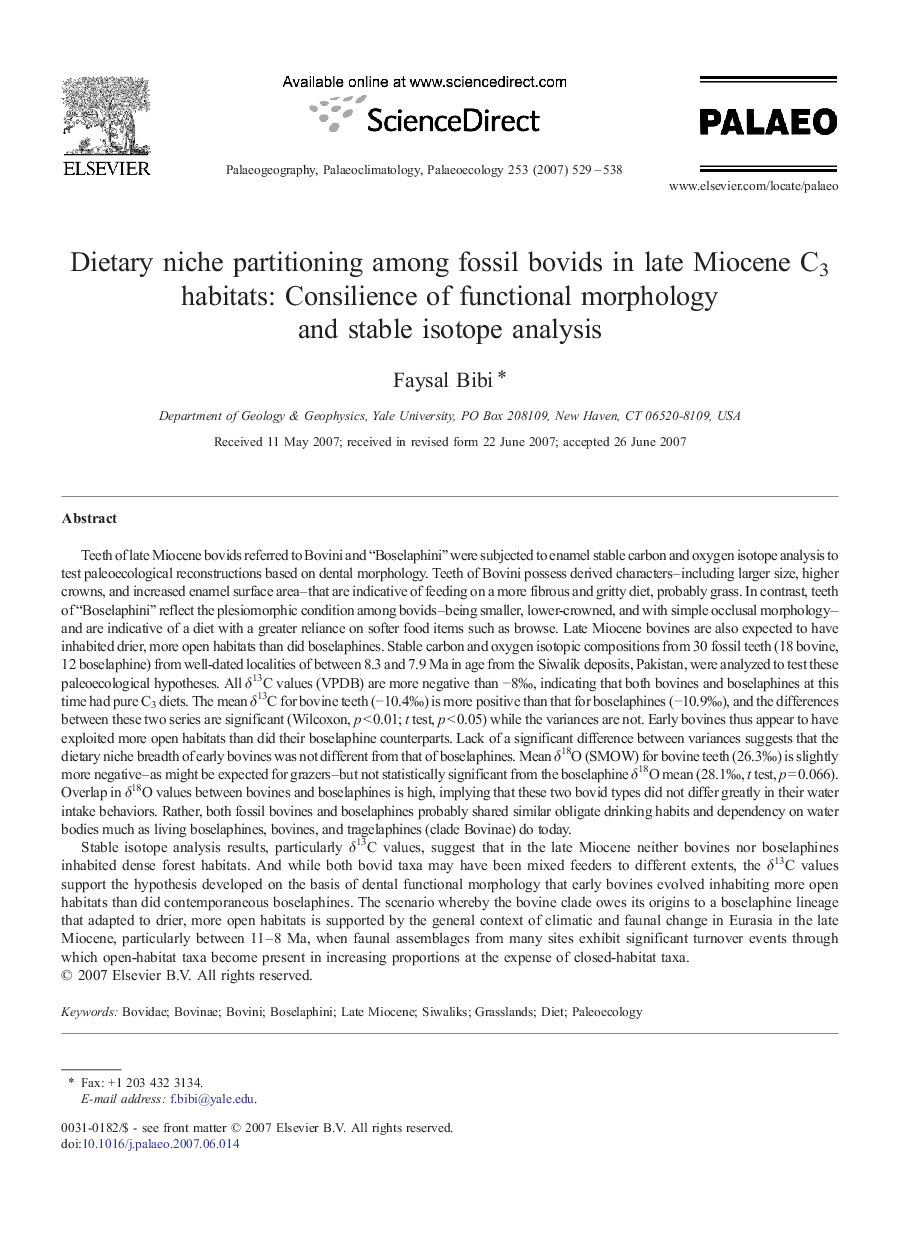| کد مقاله | کد نشریه | سال انتشار | مقاله انگلیسی | نسخه تمام متن |
|---|---|---|---|---|
| 4468918 | 1622344 | 2007 | 10 صفحه PDF | دانلود رایگان |

Teeth of late Miocene bovids referred to Bovini and “Boselaphini” were subjected to enamel stable carbon and oxygen isotope analysis to test paleoecological reconstructions based on dental morphology. Teeth of Bovini possess derived characters–including larger size, higher crowns, and increased enamel surface area–that are indicative of feeding on a more fibrous and gritty diet, probably grass. In contrast, teeth of “Boselaphini” reflect the plesiomorphic condition among bovids–being smaller, lower-crowned, and with simple occlusal morphology–and are indicative of a diet with a greater reliance on softer food items such as browse. Late Miocene bovines are also expected to have inhabited drier, more open habitats than did boselaphines. Stable carbon and oxygen isotopic compositions from 30 fossil teeth (18 bovine, 12 boselaphine) from well-dated localities of between 8.3 and 7.9 Ma in age from the Siwalik deposits, Pakistan, were analyzed to test these paleoecological hypotheses. All δ13C values (VPDB) are more negative than −8‰, indicating that both bovines and boselaphines at this time had pure C3 diets. The mean δ13C for bovine teeth (−10.4‰) is more positive than that for boselaphines (−10.9‰), and the differences between these two series are significant (Wilcoxon, p < 0.01; t test, p < 0.05) while the variances are not. Early bovines thus appear to have exploited more open habitats than did their boselaphine counterparts. Lack of a significant difference between variances suggests that the dietary niche breadth of early bovines was not different from that of boselaphines. Mean δ18O (SMOW) for bovine teeth (26.3‰) is slightly more negative–as might be expected for grazers–but not statistically significant from the boselaphine δ18O mean (28.1‰, t test, p = 0.066). Overlap in δ18O values between bovines and boselaphines is high, implying that these two bovid types did not differ greatly in their water intake behaviors. Rather, both fossil bovines and boselaphines probably shared similar obligate drinking habits and dependency on water bodies much as living boselaphines, bovines, and tragelaphines (clade Bovinae) do today.Stable isotope analysis results, particularly δ13C values, suggest that in the late Miocene neither bovines nor boselaphines inhabited dense forest habitats. And while both bovid taxa may have been mixed feeders to different extents, the δ13C values support the hypothesis developed on the basis of dental functional morphology that early bovines evolved inhabiting more open habitats than did contemporaneous boselaphines. The scenario whereby the bovine clade owes its origins to a boselaphine lineage that adapted to drier, more open habitats is supported by the general context of climatic and faunal change in Eurasia in the late Miocene, particularly between 11–8 Ma, when faunal assemblages from many sites exhibit significant turnover events through which open-habitat taxa become present in increasing proportions at the expense of closed-habitat taxa.
Journal: Palaeogeography, Palaeoclimatology, Palaeoecology - Volume 253, Issues 3–4, 27 September 2007, Pages 529–538